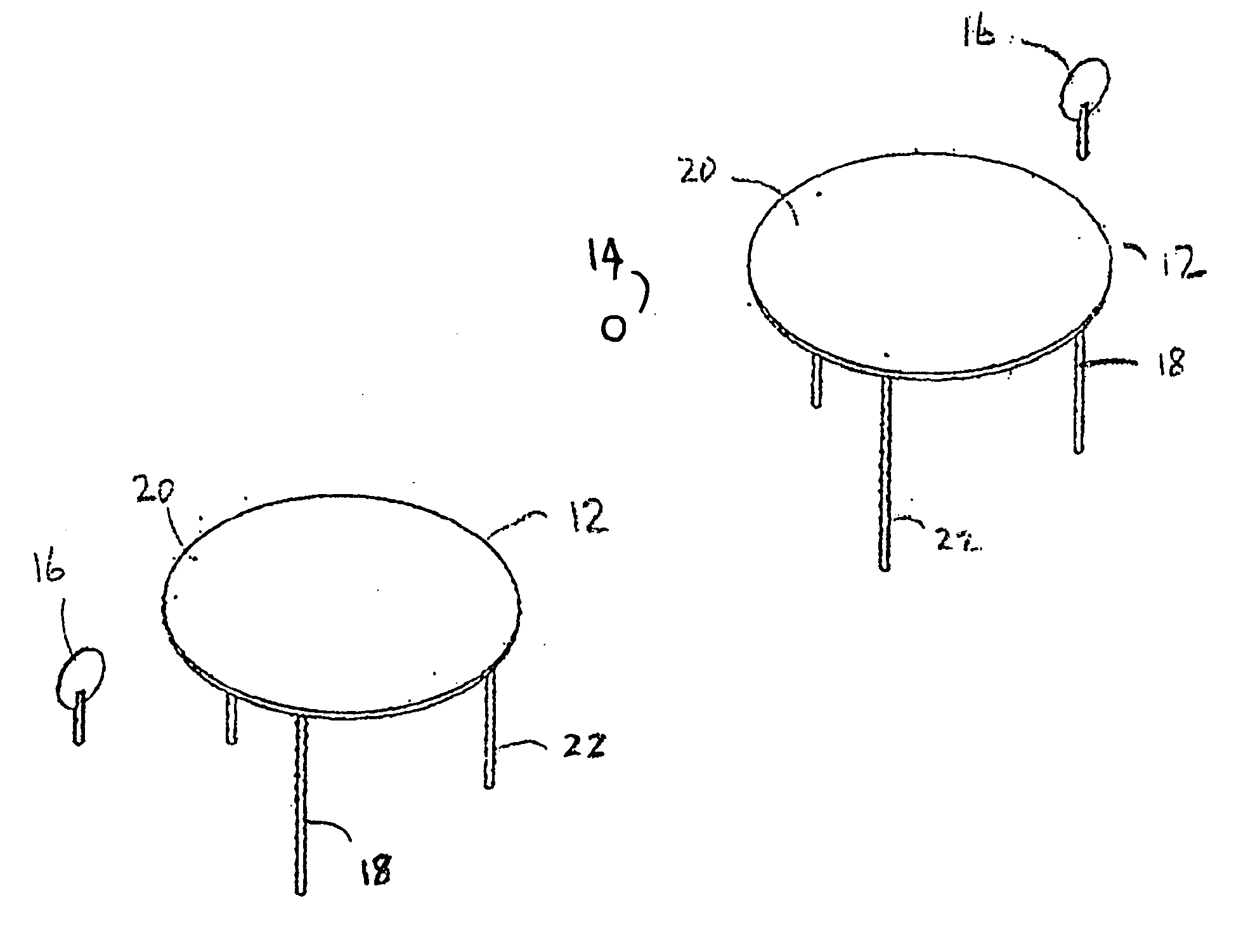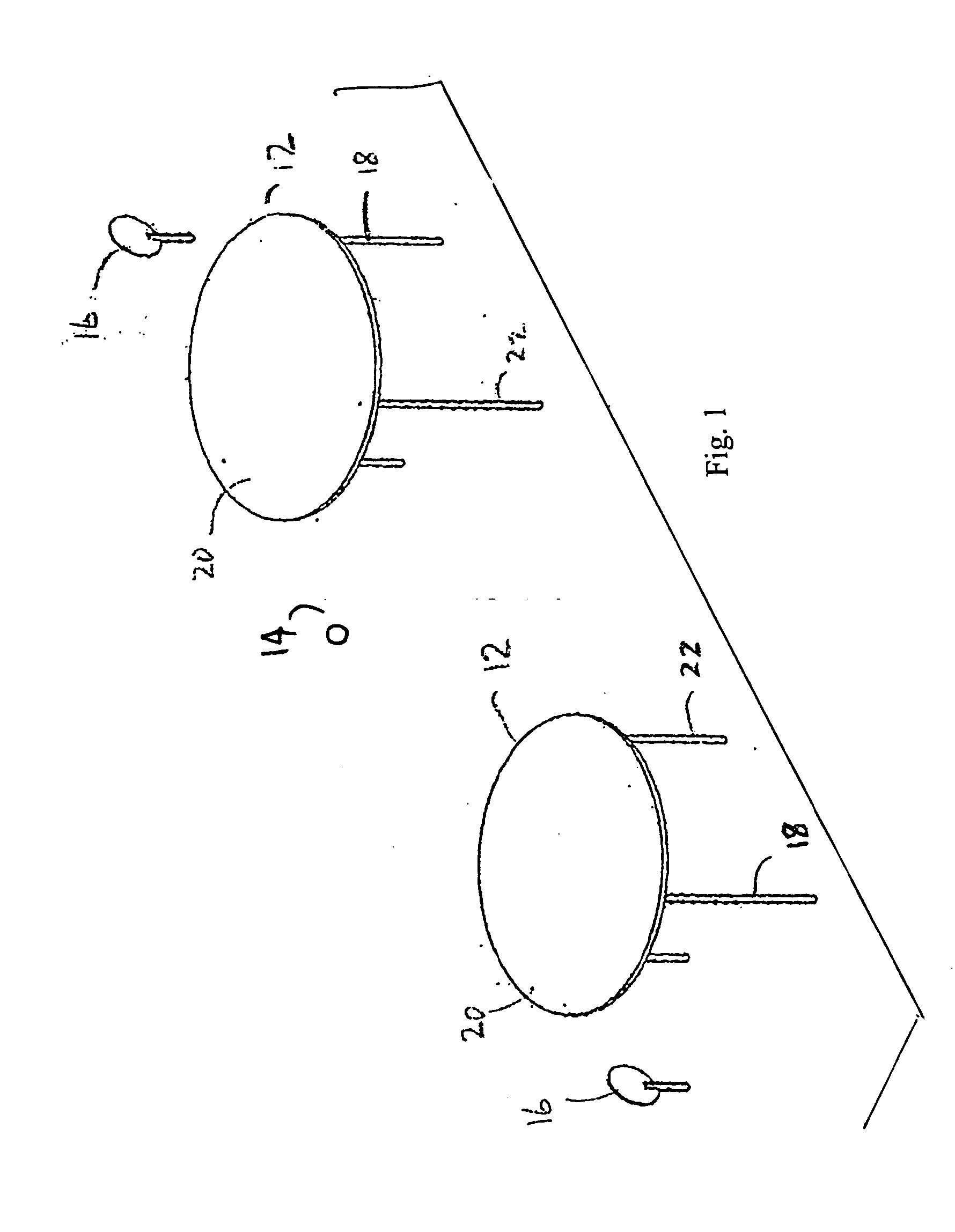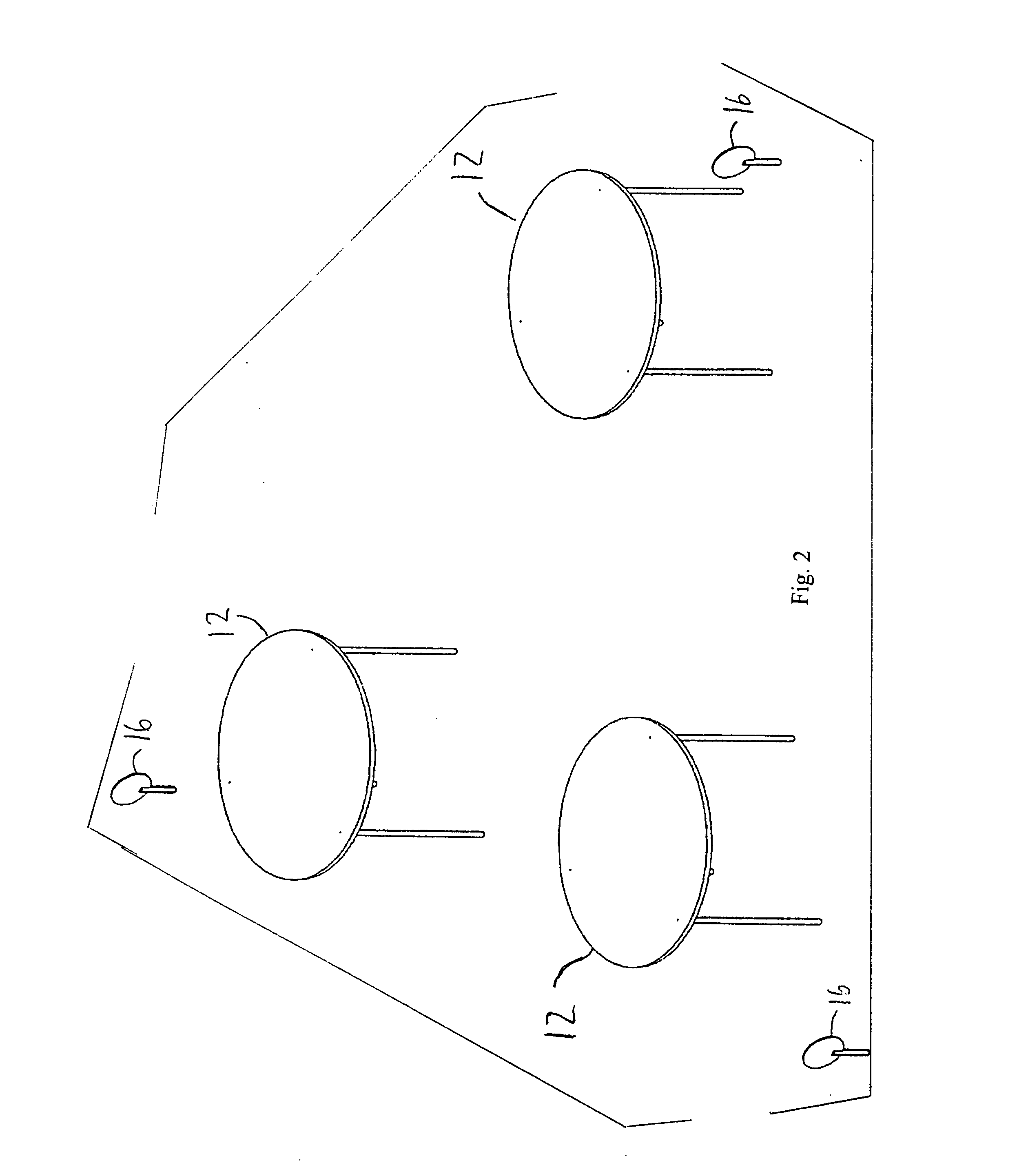Method and system for playing a table game
a table game and game technology, applied in the field of table games, can solve the problems of increasing separation, reducing the effective target area, and providing more time for players, and achieve the effect of increasing the difficulty of playing for players and increasing the difficulty of the gam
- Summary
- Abstract
- Description
- Claims
- Application Information
AI Technical Summary
Benefits of technology
Problems solved by technology
Method used
Image
Examples
Embodiment Construction
[0041]FIG. 1 shows the game system 10 for the preferred embodiment of the invention. The apparatus for playing the game is preferably composed of a pair of tables 12, a ball 14, and two paddles 16. As shown in FIG. 1, when playing a two-player game, only two paddles 16 are required, but for a team game with four players, a paddle 16 is used for each person playing. Another option would be to play a three-player game involving three tables 12, placed in a triangular arrangement as shown in FIG. 2, with each player defending their own table 12.
[0042] The game may also be played with an intervening object, such as a sofa, present between the two tables 14 as in FIG. 3. Preferably, no intervening object should protrude between the two tables 14 above the levels of the playing surfaces 20.
[0043] Each table 12 as shown in FIGS. 1-6 comprises a playing surface 20. A typical diameter for a circular playing surface would be 48 inches. The tables 12 as depicted each include their own suppor...
PUM
 Login to View More
Login to View More Abstract
Description
Claims
Application Information
 Login to View More
Login to View More - R&D
- Intellectual Property
- Life Sciences
- Materials
- Tech Scout
- Unparalleled Data Quality
- Higher Quality Content
- 60% Fewer Hallucinations
Browse by: Latest US Patents, China's latest patents, Technical Efficacy Thesaurus, Application Domain, Technology Topic, Popular Technical Reports.
© 2025 PatSnap. All rights reserved.Legal|Privacy policy|Modern Slavery Act Transparency Statement|Sitemap|About US| Contact US: help@patsnap.com



